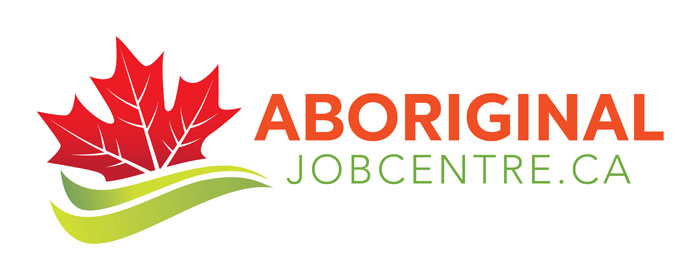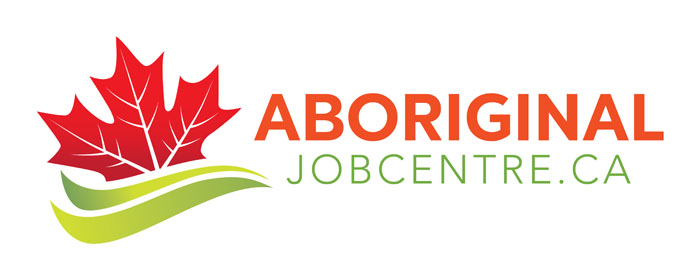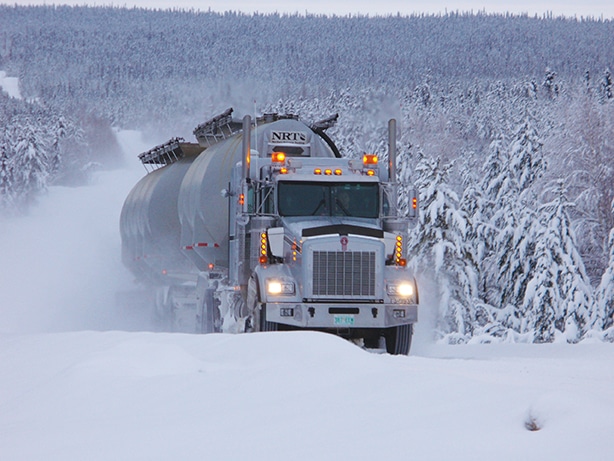Uncategorized

Get the skills and training you need by finding your local Indigenous service delivery organization.
What Indigenous service delivery organizations offer
Indigenous service delivery organizations offer a variety of employment services based on the needs and priorities of First Nations, Inuit, Métis and urban/non-affiliated Indigenous people. Organizations will link your training needs to the job market by providing you with the skills and training you need to help find a job.
These organizations provide a suite of skills development and job training, from essential skills such as literacy and numeracy to more advanced training for in-demand jobs. They also offer a range of wrap-around services (such as help with child care supports and transportation) while you’re training to achieve your long-term career goals.
Find an Indigenous service delivery organization in your community
In this section
- First Nations service delivery organizations
- Inuit service delivery organizations
- Métis service delivery organizations
- Urban/Non-affiliated service delivery organizations
Source: Government of Canada

Reducing barriers to job success and ensuring more First Nations members can access the skills training they need to acquire sustainable employment are the goals of a training project underway with the Lheidli T’enneh First Nation and McLeod Lake Indian Band.
The North Central LNG Strategies Program is focused on getting up to 94 Indigenous people from these two communities employment-ready for the direct and indirect jobs associated with development of the liquefied natural gas (LNG) sector and labour-market demand in northern British Columbia.
The project will run for approximately 52 weeks in Prince George and on the Shelly Reserve of the Lheidli T’enneh. The project is being administered by the Prince George Nechako Aboriginal Employment and Training Association (PGNAETA).
Components include:
- a culturally based job-readiness program that supports personal well-being and career success;
- a certificate bootcamp to enable community members to acquire safety certifications required by employers;
- driver’s licence training;
- workplace literacy and academic upgrading; and
- services that connect participants with potential employers.
Provincial funding of $420,000 is provided through the Aboriginal Skills Training Development Fund, which is investing up to $30 million over three years for new Aboriginal skills-training projects and partnerships.
Offering community-driven skills training is one part of the Province’s efforts to include First Nations communities and Indigenous people in new LNG-sector opportunities. The Province is also working with First Nations communities on environmental stewardship priorities and financial benefits agreements.
Quotes:
John Rustad, Minister of Aboriginal Relations and Reconciliation and MLA for Nechako Lakes –
“Programs like this reduce barriers to skills training and employment opportunities for Aboriginal people and help move us closer to the goal of shared prosperity. These programs are strengthened by the fact they are designed with the First Nations communities and delivered close to home.”
Shirley Bond, Minister of Jobs, Tourism and Skills Training and Minister Responsible for Labour and MLA for Prince George-Valemount –
“Increasing Aboriginal participation in skills training is critical to the future success of British Columbia. Aboriginal youth are the fastest-growing demographic in our province with half under the age of 25. Programs like these will provide Aboriginal people with the skills and work experience necessary to find their fit in our diverse, strong and growing economy.”
Mike Morris, Minister of Public Safety and Solicitor General and MLA for Prince George-Mackenzie –
“This project will provide members of the Lheidli T’enneh First Nation and Mcleod Lake Indian Band with the kind of job-related, transferable skills that support career success and will benefit both themselves and their communities.”
Chief Dominic Frederick, Lheidli T’enneh First Nation –
“Lheidli T’enneh would like to thank both McLeod Lake Indian Band and PGNAETA for partnering with the North Central LNG Strategies Project. We are in year 2, and have seen favourable results of building community member’s capacity – it’s about investing in our people for current and future job opportunities.”
Chief Derek Orr, McLeod Lake Indian Band –
“This training project and our partnership with the Lheidli T’enneh First Nation and PGNAETA will help our members access direct and indirect LNG job opportunities within our traditional territory. It provides new pathways to employment that will benefit our entire community.”
Quick Facts:
- Aboriginal people are a priority in B.C.’s Skills for Jobs Blueprint.
- A key target of the Skills for Jobs Blueprint is to increase Aboriginal workforce participation by 15,000 new Aboriginal workers by 2024.
- During the past year, more than 1,200 First Nations members have received training through programs supported by the Aboriginal Skills Training Development Fund. Another 1,000 will be trained in 2016-17.
- The Prince George Nechako Aboriginal Employment and Training Association (PGNAETA) was incorporated under the British Columbia Society Act in 1993 to administer and deliver Employment Training initiatives for Aboriginal people within the Prince George Nechako area.
Learn More:
Lheidli T’enneh First Nation: http://www.lheidli.ca/
McLeod Lake Indian Band: http://www.mlib.ca/
B.C.’s Skills for Jobs Blueprint: www.workbc.ca/skills
The BC Jobs Plan: http://engage.gov.bc.ca/bcjobsplan/
Prince George Nechako Aboriginal Employment and Training Association: http://pgnaeta.bc.ca/
Source: BC Gov News

Closing the employment gap for Indigenous youth in Atlantic Canada is key to easing the region’s acute labour shortage, new research released Thursday said.

The Atlantic Provinces Economic Council said employment outcomes for the region’s growing Indigenous youth population have improved in recent years, but still lag non-Indigenous youth.
The research found Indigenous youth under age 25 face a number of barriers in the labour market, including lower educational attainment and a lack of resources such as transportation.
Increasing funding for Indigenous youth training, skills development and entrepreneurship would help improve labour market outcomes of Indigenous youth, the report said.
This would boost economic development in Indigenous communities a well as help address a labour crunch in the broader economy, the research found.
But they still have lower employment rates than non-Indigenous youth, he said.
“Reducing barriers and closing gaps is essential to promote economic development in Indigenous communities,” Bergman said.
“This will also expand the pool of skilled workers in our economy to help address ongoing labour shortages across the region.”
Almost 49,000 jobs were vacant across the Atlantic region in April 2022, bringing the vacancy rate to a record high of 4.9 per cent.
“Getting off-reserve Indigenous youth’s employment rates to the same level as non-Indigenous youth would add 540 new workers to the region,” the report said.
Source: Global News

Indigenous Services Canada (ISC)’s First Nations and Inuit Youth Employment Strategy supports initiatives to provide First Nations and Inuit youth with work experience information about career options and opportunities to develop skills to help gain employment and develop careers.
The strategy is part of the Government of Canada’s effort to enhance education, participation in the labour market and economic success of Indigenous people in Canada. It is a component of the Government of Canada’s Youth Employment and Skills Strategy led by Employment and Social Development Canada.
ISC is responsible for employment and skills development for First Nations and Inuit youth under the Youth Employment and Skills Strategy.
The strategy also helps First Nations and Inuit youth, between the ages of 15 and 30, who are ordinarily resident on reserve or in recognized communities to:
- develop and enhance essential employability skills
- get exposed to a variety of career options
- understand the benefits of education as key to labour market participation
- gain co-operative education work and study opportunities
ISC delivers 2 programs under the First Nations and Inuit Youth Employment Strategy:
- the First Nations and Inuit Summer Work Experience Program: supports initiatives to help First Nations and Inuit youth acquire skills, prepare for full-time employment and earn income to support post-secondary education, through summer work experiences
- the First Nations and Inuit Skills Link Program: supports initiatives that help First Nations and Inuit youth acquire essential employability and job-related skills, learn about job and career options and prepare for employment and career development
Source – Indigenous Services Canada

The Government of Canada has created a number of employment related services and tools to help Indigenous people with their job search.
- Indigenous and Northern Affairs Canada – Learn more about the employment resources available to Indigenous people.
- Aboriginal Youth – Find a list of programs and services specific to the needs of Indigenous youth.
Find and apply to Government of Canada jobs and training opportunities for Indigenous people, including students and graduates:
- opportunities for Indigenous students
- opportunities for Indigenous job seekers (high school and college or university graduates)
Count yourself in! Self-declare as an Indigenous person when you apply
Job opportunities for Indigenous students
There are many public-service wide job opportunities available to you, as well as opportunities run by specific departments and agencies. Keep reading to learn more about these opportunities.
Don’t forget to self-declare as an Indigenous person when you apply!Public service-wide job opportunitiesJob opportunities run by specific departments and agencies
Be sure to visit GC Jobs to find out about other recruitment programs in other federal departments and agencies.
Job opportunities for Indigenous job seekers (high school and college or university graduates)
Learn more about the opportunities that are available to you.
Don’t forget to self-declare as an Indigenous person when you apply!Job opportunities for Indigenous job seekersTraining opportunities and profiles for Indigenous peopleJob opportunities open to Indigenous employees of the federal public servicePublic service-wide job opportunities open to all Canadians
Be sure to visit GC Jobs to find out about recruitment programs in other federal departments and agencies and browse through all the available opportunities.
Contact us
For more information about job and training opportunities for Indigenous people, contact the Aboriginal Centre of Expertise at: cfp.cea-ace.psc@canada.ca.
Useful links

by Derek Clouthier
SASKATOON, Sask. — Recent statistic show that in 2016 there were 315 truck drivers who spoke a Cree language, and the numbers have been in decline for the last 15 years.
More truck drivers in Canada speak Greek, Gujarati, Hebrew, or Creole languages than do Cree. Compare that to the number of Punjabi and Hindi speaking drivers, which numbers 35,085 in total, and it puts the lack of Aboriginal drivers in perspective.
With the well-documented shortage of qualified drivers in Canada, and North America as whole, Indigenous workers are clearly an untapped resource for many in the industry.
But that does not mean this group has gone totally unnoticed.
Northern Resource Trucking (NRT) is one carrier looking to entice more Indigenous workers into the industry. Launched in 1986, the company was originally structured as a partnership between the Lac La Ronge Indian Band of La Ronge, Sask., with a 51% share, and Trimac Transportation with 49%. In 1995, the partnership expanded to include northern Aboriginal and Metis communities.
At present, NRT is 71% Aboriginally-owned, many of the owners representing the northern communities impacted by the development of the uranium industry.
Wendy Featherstone is the human resources manager for NRT, and she said there are several challenges when it comes to recruiting Indigenous workers into the industry.
“One of the easiest ways to get into trucking is by having a family member as a truck driver, or having trucking as a necessary part of an associated business, like farming or construction,” said Featherstone. “The more exposure people have to trucking and mechanics, the easier it is to learn the business and pass the required training and tests. Even obtaining a truck to take the road test can be a barrier for people.”
Featherstone said for Indigenous Peoples, trucking has historically not been a traditional industry in their culture, and the only way to learn and experience what it’s all about is through training, which is expensive.
Northern Resource, however, has been proactive in this area, creating its own training school based out of La Ronge.
“We have had hundreds of students graduate through our training program, and it increases the pool of drivers available,” said Featherstone, “not only to NRT, but to other companies in northern Saskatchewan, as well.”
Deb Steel, news director for the Aboriginal Multi-Media Society of Alberta, said the most important thing when it comes to attracting Indigenous Peoples to industries like trucking is relationship building, as well as knowing which groups are already working with those communities.
“If there is a need in an Indigenous community, there is a group trying to fill that need,” said Steel. “Take for instance, Women Building Futures, a company that trains women in the trades and industry professions. From the grassroots to the corporate level, like the Canadian Council for Aboriginal Business, a simple call will get you a referral to the right source and qualified, trained and experienced staff. And that call might just open up other opportunities for your business.”
Steel said there are huge networks of companies working together to employ Indigenous workers, as well as Aboriginal businesses as sub-contractors and experts in their field.
“Let’s remember that 60% of First Nations people live off reserve, and Indigenous Peoples also include Metis, Inuit, and non-status peoples too,” she said. “That’s 1.4 million people across the country. That’s a lot of potential.”
A lot of potential indeed.
A study completed by Trucking HR Canada this past May indicates that 46% of Canada’s Aboriginal Peoples are under the age of 24, and more than half live in cities.
Canada’s Aboriginal communities are made up of 60.8% First Nations, 32.3% Metis, and 4.2% Inuit.
The study says some of the barriers in recruiting Aboriginal workers include assumptions about the industry, a lack of understanding of what kind of jobs exist in the industry, and on the employer side, a misconception of what Indigenous Peoples look for in a career.
Terry Shaw, executive director of the Manitoba Trucking Association (MTA), said his association shares and promotes Trucking HR Canada’s research with its members.
Trucking HR Manitoba submitted an application for the Manitoba industry sector council, and one of the four targeted objectives was to solicit partnerships with the Aboriginal community, an effort that is not new to the MTA.
“The MTA has previously partnered with the Centre for Aboriginal HR Development and we applied for program funding for a Class 1 training program,” Shaw pointed out, adding that they also recently met with representatives from the Aboriginal Business Council and the Aboriginal Chamber of Commerce.
Shaw said there is a large Aboriginal population in Manitoba, a younger population, which means partnering with the community makes sense for the industry.
Arrow Transportation Systems out of Kamloops, B.C., is another carrier that offers a professional driver training program for Indigenous Peoples.
A partnership between Arrow, BCT Projects, Thompson River University, and Columbia Transport Training, the effort is an attempt to combat the driver shortage in the industry and high unemployment in First Nations communities.
“We have a history of building long-standing working relationships with First Nations communities based on trust, respect, and cooperation,” said Kevin Gayfer, regional manager of Arrow. “Our partnerships with First Nations groups have been established through formal joint ventures and informal collaborative initiatives. Arrow plans to build on these unique partnerships while providing employment opportunities for First Nations communities.”
The program provides training and education through Thompson River University to acquire a Class 1 licence. Graduates then do on-the-job training with Arrow’s driver mentor program.
Dave Earle, president and CEO of the B.C. Trucking Association, said his association does not have any specific policies to address the hiring of more Indigenous workers, but recognize the need to engage this under-represented group.
“Engaging Canada’s Indigenous Peoples is important for the continued success of our industry,” said Earle. “We have begun working with public and Aboriginal training centers to better understand the needs of Indigenous persons and the obstacles that they face entering our industry.”
Earle said the price tag attached to provincial licensing programs can be a barrier to individuals looking to acquire a commercial licence.
“The expense of quality training and a lack of financial supports is another issue we are working with government to mitigate,” he said.
Featherstone said her company’s ability to train its own drivers has been the key to their success.
“The routes that we travel are directly through some of our partnership communities,” she said. “No one knows the roads or the needs of the communities better than those members, so it makes sense that we direct our training there.”
Featherstone said other carriers have also benefited from NRT’s training program.
“Our graduates and drivers are in high demand from not just other trucking companies, but other industries as well,” she said. “We have had our graduates move on to successful careers in mining, milling, policing, construction and countless other careers. The key to the success of our drivers, both with us and elsewhere seems to be the training and the safety standards that are in place.”
Steel said relationship building with Aboriginal communities has been happing for some time.
“They won’t be starting from scratch or inventing the wheel,” Steel said. “There are huge benefits to this relationship building. If your head is in the place where you are willing to learn about working with Indigenous populations, then there are plenty of folks who will help guide that effort.”

The Government of Canada has created a number of employment related services and tools to help Indigenous people with their job search.
- Indigenous and Northern Affairs Canada – Learn more about the employment resources available to Indigenous people.
- Aboriginal Youth – Find a list of programs and services specific to the needs of Indigenous youth.

Indigenous Services Canada (ISC) works collaboratively with partners to improve access to high quality services for First Nations, Inuit and Métis. Our vision is to support and empower Indigenous peoples to independently deliver services and address the socio-economic conditions in their communities.
Services and information
Indigenous health
Access the First Nations and Inuit primary care, public health and mental health services. Find support for former students of Indian residential schools.
Water in First Nations communities
Find out how the Government of Canada works with First Nations to end long-term drinking water advisories and improve water and wastewater systems on reserve
Social programs
Learn about the key social programs Indigenous Services Canada funds in First Nations communities and urban centres.
Find programs that support elementary and secondary education, provide financial support to First Nations and Inuit post-secondary students, and help Canadian post-secondary institutions develop courses.
Find programs that support improved housing on reserve.
First Nations community infrastructure
Find programs to support community infrastructure such as schools, roads, and waste management facilities on reserve.
Establishing a new fiscal relationship
Learn about the steps being taken to move towards sufficient, predictable and sustained funding.
Emergency management
Resources for First Nations communities to prevent, prepare for, respond to and recover from emergencies.
Consultation, engagement and the duty to consult
Participate in ongoing engagements, learn what was heard in recently-held engagements and find out about the duty to consult.
The path forward
Learn about the five key priorities of the new department Indigenous Services Canada.

Just like any other job, there will always be some barriers that you would need to consider when trying to recruit people for your business. This is regardless of the line of work, the type of people you will recruit, the education they have amongst others.
These tips will provide you information about the barriers that you may face when recruiting First Nation citizens specifically. So, if you are this someone who is considering recruiting a first nation citizen of Canada, you will find the following points to consider useful.

Education
Unlike the non-native population, there is a larger percentage of First Nation citizens who lack education and literacy. So, looking for someone who is educated enough can be a barrier for company owners. Regardless, there are government services and agencies that can help you find the perfect person for your business.
Difference in Culture
One major barrier is cultural differences. You will want to ensure that your company is willing to accept certain cultural differences as long as it does not interfere with normal business operations and activities.
Racism and Discrimination
Some non-native individuals are racist and discriminate towards the First Nation citizens. Make sure to implement an appropriate rule with regards to this conduct.
Self-esteem
It is true that a larger percentage of the First Nation citizens have a low self-esteem and it can be a huge barrier for their recruitment. As a result, some of these individuals may not realize that they are skilled enough to work for your company when in fact they really are.
Lack of Driving License
Driving license can be a vital requirement for recruitment in certain businesses and companies in Canada. Some First Nation citizens have huge difficulties in getting a license because they usually live in remote places where getting a license can be a huge issue..
